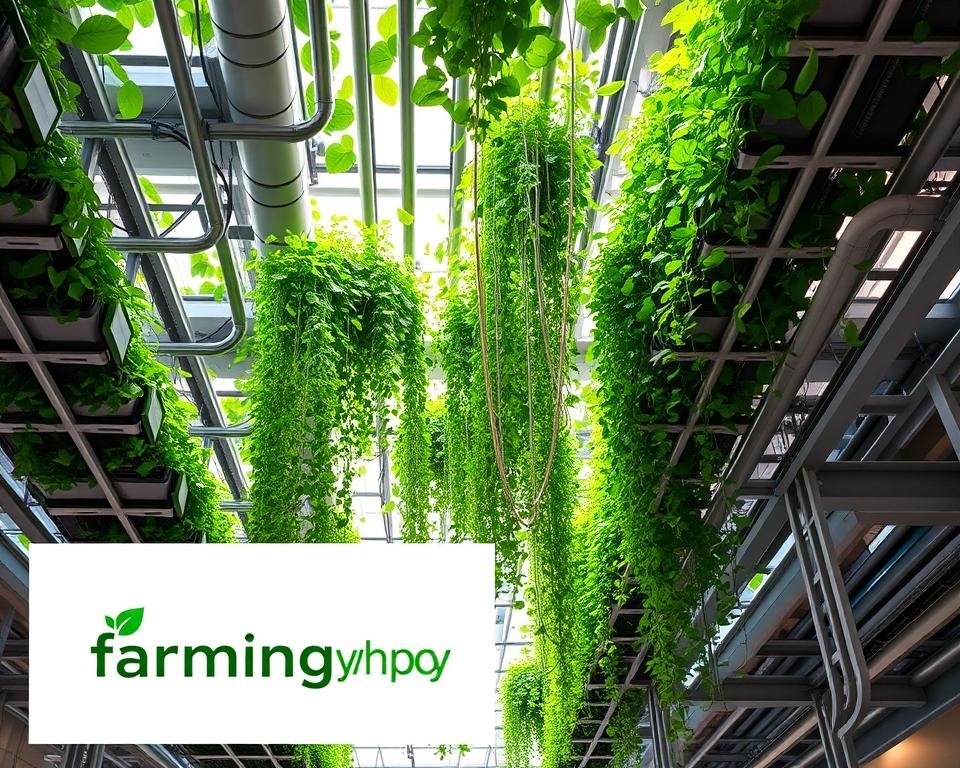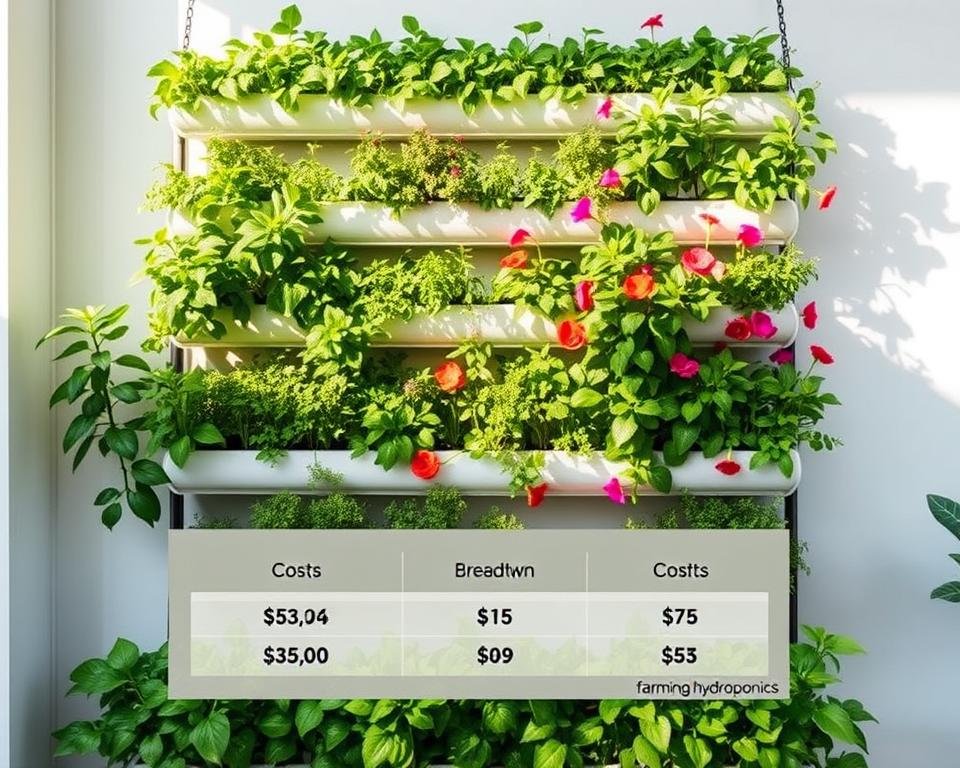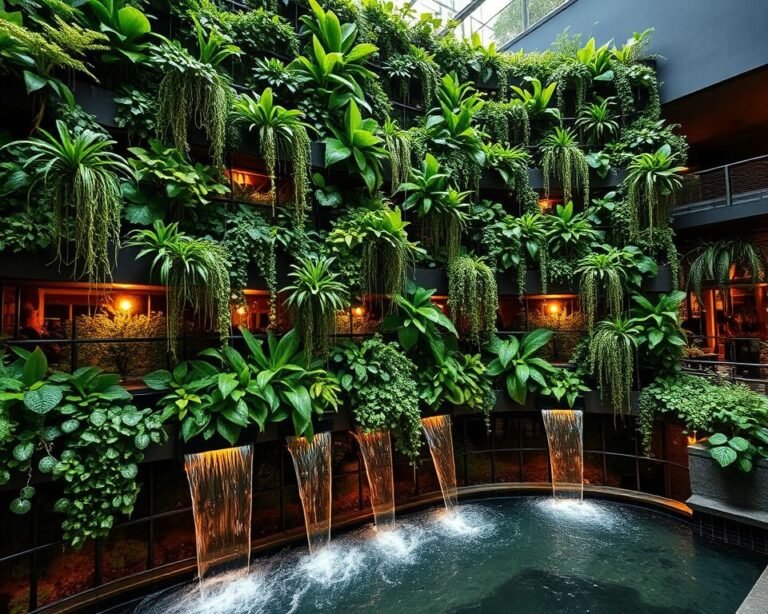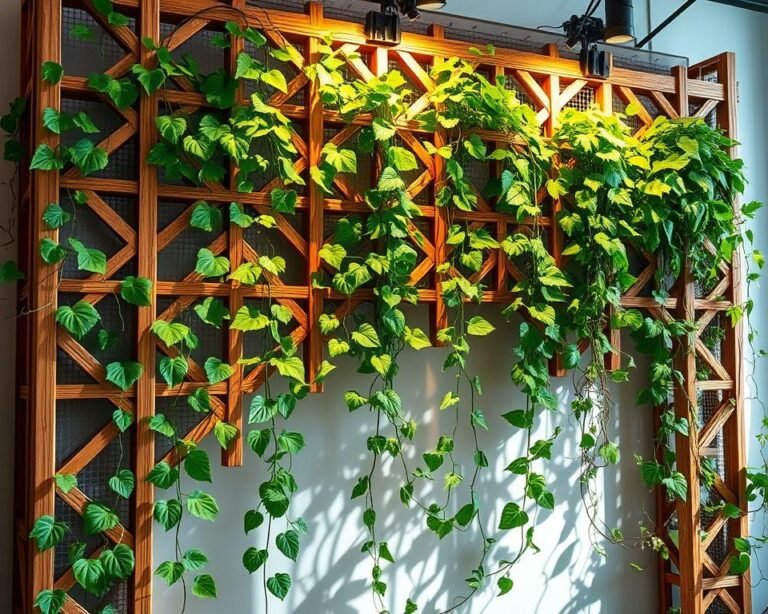Cost Analysis: Building a Vertical Garden
Imagine a lush green wall breathing life into every corner of your home. Beyond its striking appearance, it purifies the air and embodies smart urban living. With the global vertical-garden market projected to reach USD 3.04 billion by 2034, a clear cost analysis is essential before you start planting.
As urban spaces shrink and environmental awareness grows, vertical gardens appeal to homeowners and businesses alike. Careful cost analysis helps you allocate the right budget for a garden that’s both beautiful and beneficial.
Installation prices can vary widely—from roughly USD 100 to USD 300 per square foot—depending on factors like structure, irrigation, and plant selection. Performing a detailed cost analysis up front ensures your project stays on track and delivers maximum value.
Key Takeaways
- Global vertical garden market projected to reach USD 3.04 billion by 2034
- Vertical gardens can improve indoor air quality by up to 87%
- Implementation costs range from USD 100-300 per square foot
- Green walls can reduce urban temperatures by 5 degrees Fahrenheit
- Growing trend with 40% of U.S. households engaged in indoor gardening by 2024
Types of Vertical Gardens and Their Basic Costs
Looking into vertical garden options means you need to plan your budget well. You’ll find many types of vertical gardens in the market. Each has its own benefits and challenges for your budget.
There are three main types of vertical gardens to consider. They can change your space and help you save money:
- Modular Vertical Garden Systems
- Non-Modular Custom Installations
- Artificial Green Wall Options
Modular Vertical Garden Systems
Modular systems are great for saving money in vertical gardening. Research shows they are flexible for various spaces. Prices vary with the size:
- Small systems (2-4 square meters): $500 – $1,500
- Medium systems (4-8 square meters): $1,500 – $5,000
- Large systems (8-12 square meters): $5,000 – $15,000
Non-Modular Custom Installations
Custom vertical gardens give you design freedom but need careful budgeting. They require detailed cost planning and often use special materials and professional designers.
Artificial Green Wall Options
Artificial green walls are a good choice for those who want easy care. They look nice and save on upkeep. They’re great for places with little sunlight or tough conditions.
Essential Components and Infrastructure Expenses

Building a vertical garden needs careful planning and smart spending. It has many key parts that affect your budget.
Choosing the right parts is crucial for your garden’s success. Studies show projects with good budget plans do better. They are 30% more likely to stay on budget.
- Irrigation Systems: Essential for plant health and long-term sustainability
- Structural Support: Ensuring stable and secure garden installation
- Growing Media: High-quality substrate for plant growth
- Waterproofing Materials: Protecting underlying structures
Using a detailed cost control plan can cut down on surprises. It’s important to know each part’s role and its long-term effects.
| Component | Estimated Cost Range | Cost Optimization Strategy |
|---|---|---|
| Irrigation System | $200 – $1,500 | Choose efficient, water-saving designs |
| Structural Support | $500 – $3,000 | Use lightweight, durable materials |
| Growing Media | $100 – $500 | Select nutrient-rich, sustainable options |
| Waterproofing | $300 – $1,000 | Invest in quality membranes |
A thorough cost-benefit analysis shows quality parts save money in the long run. By spending wisely and knowing each part’s value, you can make a beautiful and cost-effective vertical garden.
Cost Analysis of Different Scale Projects
Understanding the costs of vertical garden installations is key. It involves looking at cost forecasting and financial modeling. Each project size has its own cost factors that affect your budget and design.

The cost of your vertical garden changes with the project size. Here are some cost-saving tips for different sizes:
Small-Scale Projects (2-4 square meters)
For homes or small offices, costs range from $500 to $2,500. Main expenses include:
- Modular planting systems
- Basic irrigation infrastructure
- Initial plant material
- Simple mounting hardware
Medium-Scale Installations (4-8 square meters)
For bigger offices or commercial spaces, costs go up. Expect to spend between $2,500 and $7,500. You’ll need to consider:
- Advanced hydroponic systems
- Specialized irrigation networks
- Professional design consultation
- Higher-quality plant selections
Large Commercial Projects (8-12+ square meters)
Big projects need a lot of planning. Costs can reach from $7,500 to $20,000. You’ll need to think about:
- Complex structural support systems
- Custom engineering
- Advanced climate control mechanisms
- Comprehensive maintenance contracts
Knowing these cost differences helps you plan better. You can make the most of your investment and avoid extra costs.
Maintenance and Ongoing Operational Costs
When planning a vertical garden, it’s key to think about long-term costs. Annual upkeep usually costs about one-third of what you spent to set it up. A smart approach to managing costs can make your garden both sustainable and cost-effective.
Preventive care is important to save money. Regular tasks like pruning, fertilizing, and pest control can prevent costly repairs. Using software to manage maintenance can help track costs and improve efficiency, cutting down on expenses.
Using energy-efficient methods can also save money. LED lights and smart irrigation systems can lower your utility bills. Training maintenance staff well can also reduce mistakes and save money in the long run. Designing your garden to be sustainable can bring both environmental and financial benefits.
Don’t forget to budget for ongoing costs like replacing plants, utilities, and maintenance services. A well-thought-out vertical garden can turn from a financial strain into a valuable green investment that enhances your space.







